Picture this: You’re on a thrilling road trip, wind in your hair, your favorite tunes playing, and the freedom of the open road ahead. But when the day ends and you step out of the car, you’re met with an unpleasant sight; your car’s glossy exterior is now a graveyard for countless bugs and insects.
These tiny critters are more than just a mess. They can seriously harm your car’s paintwork, causing surface damage that’s more than just skin-deep.
Here is a quick summary to give an insight before reading the whole article:
- During road trips, many bugs and insects often stick to your car.
- The number of bugs on your car can depend on how fast you’re driving, the time of year, the design of your vehicle, and the type of environment you’re going through.
- Bugs and insects are acidic. They can damage your car’s paint over time when they hit and stay there.
- While washing your car, using bug removers and pressure washing can help get rid of bugs, and they do not prevent bugs from sticking to your vehicle in the first place.
- You can protect your car from bugs before your trip with products like Nasiol’s TempoRoad, which forms a temporary barrier on your car’s surface.
- Protecting your car from bugs helps maintain its look and prevents more serious damage.
- The best way to prevent bug damage should be easy to use, effective, and safe for your car’s paintwork.
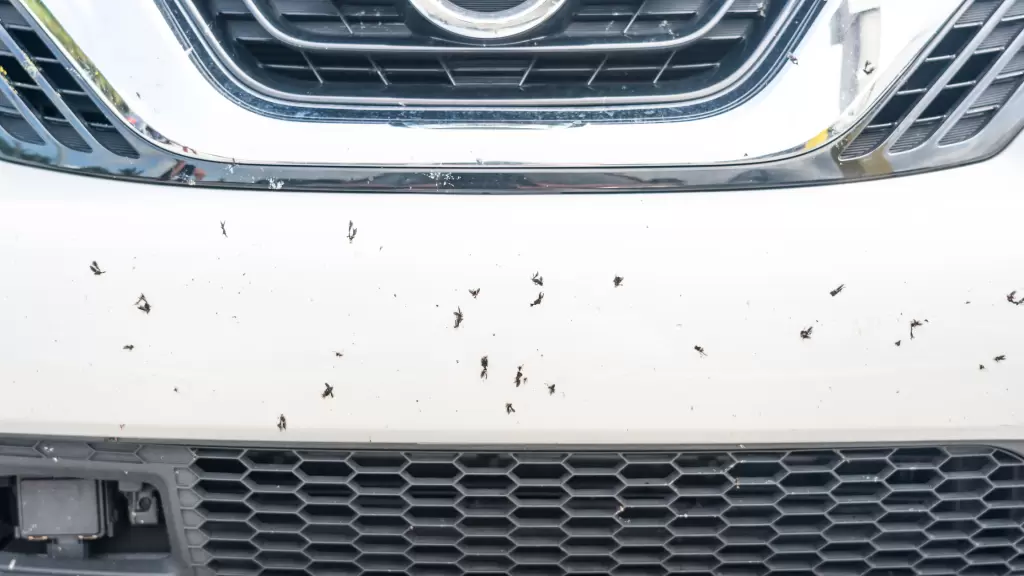
In this article, we’ll dive into why bugs get drawn to your car, how they can damage it, and most importantly, how to protect it from bugs. We’ll talk about some top-notch products and easy steps that can guide you in protecting your car from bug damage.
Why Do Insects Stick to Your Car?
Why does your road trip often end with your car decorated with insect splatters? The reasons for this are influenced by various factors like the speed of your vehicle, the time of the year, the design of your car, and even the habitats you’re driving through.
First of all, the slower your vehicle moves, the fewer insects it will collect due to the airflow dynamics around it. This is all down to the physics of airflow. Insects are less likely to hit when a vehicle moves slower because they either get trapped in the airflow or fly over the car.
The shape of your vehicle’s front also plays a part. It can determine whether insects stick or get deflected over the top. Furthermore, your headlights are another factor to consider. Nocturnal insects use light sources for navigation and can mistake your headlights for moonlight, causing a flight towards your car.
And lastly, seasonal changes matter too. Insect populations swell in summer, early fall, and late spring, consequently increasing your chances of finding these tiny aviators stuck to your car.
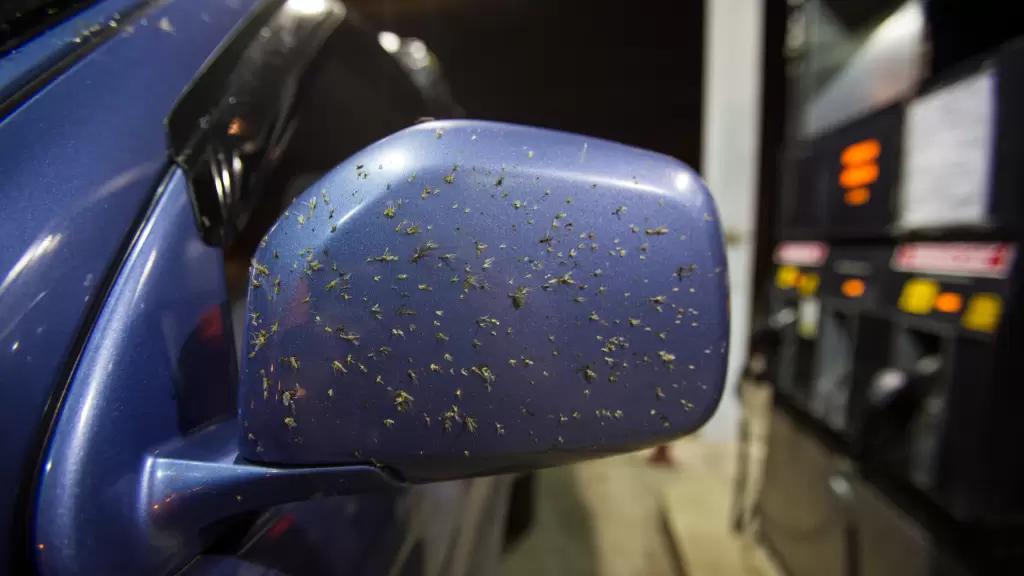
The Consequences of Bugs and Insects on Your Car
When bugs and insects collide with your car during a road trip, it’s more than an unsightly problem. These tiny creatures can cause real damage to your car’s painted surfaces.
Let’s delve into why:
- Acidic Nature of Bugs: Bugs contain acidic biochemical compounds. When they hit your car, this acid starts interacting with your car’s paint. Over time, it can lead to corrosion, deep-set damage, and even bubbling or peeling of the paint.
- Clear Coat Erosion: The clear coat—a protective layer on your car’s paint—shields it from scratches and weather damage. But the acid in bug remains can degrade this clear coat, leaving the underlying paint unprotected.
- The attraction for Other Animals: Bugs stuck on your car can draw other animals like birds, which can cause additional damage like scratches and bird droppings.
- Paint Discoloration: In the long run, bug splatters can lead to discoloration and stains on your car’s paintwork. Persistent stains can be challenging to remove and potentially lower your vehicle’s resale value.
By understanding these risks, you’re better equipped to protect your car against these pesky invaders.
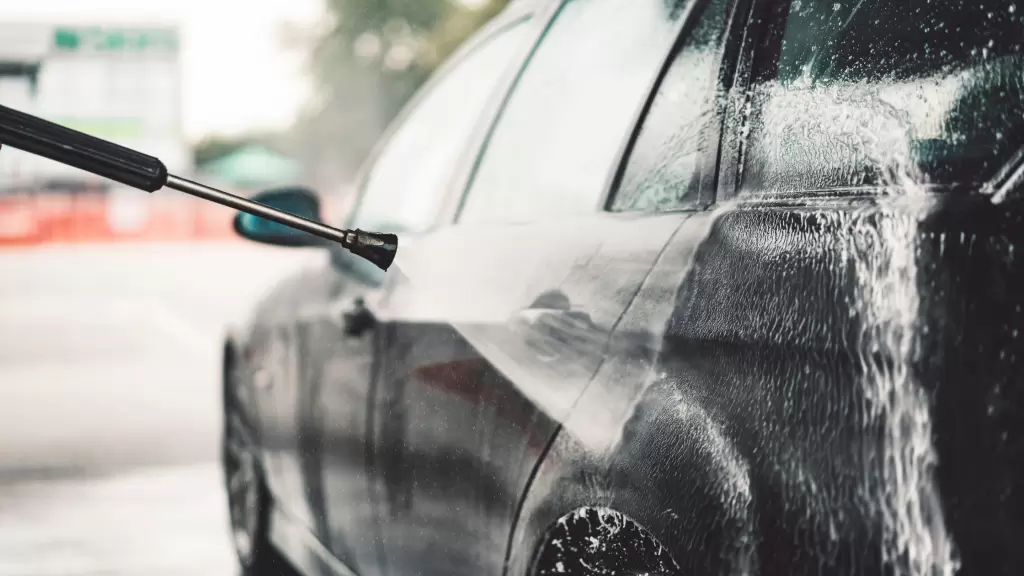
Traditional Methods of Dealing with Bugs and Insects
Navigating the pesky problem of bugs on your car’s painted surfaces might seem daunting, but numerous traditional methods have been utilized to tackle it.
Here’s a look at some of the common ways people have been dealing with this issue and how to clean bugs off your car:
- Car Washing: The most straightforward way to remove bugs is to wash your car thoroughly. However, this method might only sometimes be efficient, especially if the bugs have been stuck to the car for a while. Their acidic body fluids can harden and adhere to the paint, making them tough to remove with a standard car wash.
- Bug and Tar Removers: These specially formulated chemicals help remove bugs and tar from your car. While effective, these chemicals can sometimes be harsh and damage the car’s paint if used frequently or improperly.
- Clay Bars: A clay bar can effectively remove contaminants, including bugs, from the surface of your car. However, this process can be time-consuming and requires some skill to avoid marring the paintwork.
- Bug Sponges and Brushes: Specific sponges and brushes are available to help scrub off the bug remains. While these tools can help, they also pose a risk of scratching the car’s surface if not used gently.
- Pressure Washing: Using a high-pressure washer can be another way to remove bugs. However, if the pressure is too high, it could damage the paintwork. This method can also answer your question on how to get dried bugs off the front of the car.
While these methods provide some relief, they can be time-consuming, risk damaging the paintwork, and deal with the problem after it has occurred. Wouldn’t it be better to avoid the bugs sticking to your car in the first place?
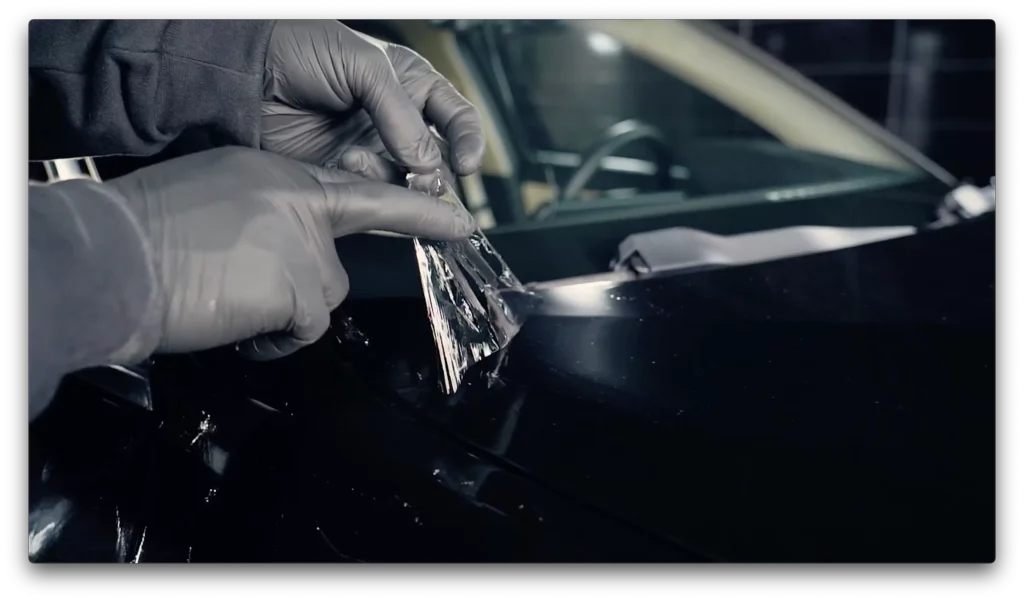
How to Prevent Bugs from Sticking to Your Car
Traditionally, dealing with bug residue has always been an afterthought, an annoying cleanup chore after the damage has been done. However, advances in nanotechnology have introduced an innovative way to protect your car from insects before they wreak havoc. Our goal here is to guide you on preventing bugs from sticking to the vehicle in the first place.
Before delving into the specifics of our primary solution, it’s essential to briefly touch on two popular methods many car enthusiasts use: nano ceramic coatings, with products such as Nasiol ZR53 and Nasiol NL272 leading the way. These coatings provide a hardened barrier between your car’s paint and the environment, offering a substantial defense against various threats, including bugs.
However, applying a ceramic coating can be a time-intensive process that requires careful preparation and is usually best left to professionals or experienced DIYers. So, what if you’re looking for a basic solution that’s easy to apply and still offers substantial protection against bugs? This is where Nasiol’s TempoRoad comes in.
TempoRoad is essentially a bug barrier for cars, but with a unique twist. Unlike other solutions, TempoRoad is designed to create a temporary shield that doesn’t require manual removal. It forms a water-based film on your vehicle’s surface, preventing bugs from sticking to the front of a vehicle or any other part prone to bug impacts.
The beauty of TempoRoad (Buy Now on Amazon) is its self-dissolving feature. When it comes into contact with water, say during a car wash, the film gradually dissolves. This ensures a hassle-free removal process that does not damage the vehicle’s surface. No scrubbing, no scraping, and absolutely no damage to your car’s paintwork.
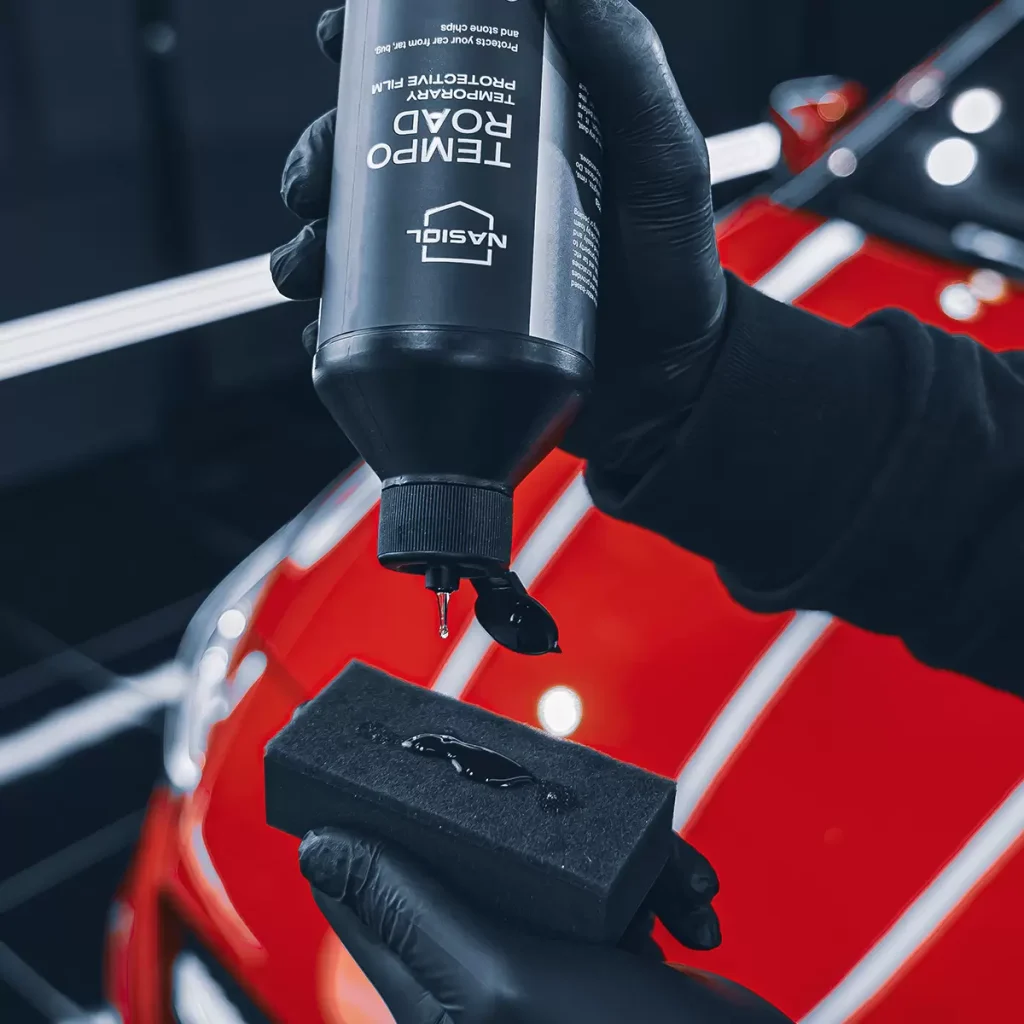
So, What Makes TempoRoad Stand Out?
- Easy to Use: Designed with simplicity in mind, you can easily apply TempoRoad yourself without the need for any special equipment or professional help. Simply ensure the surface is dry and free from dust or stains, spread the product evenly, and you’re done! It forms a homogenous film on the surface in 15-20 minutes, ready to protect your car.
- Eco-Friendly: The formula of TempoRoad is one of a kind. It’s designed not only to protect your vehicle from bug stains and dust but also to do so in an eco-friendly manner.
- Safe Removal: Unlike some other protective measures, TempoRoad can be safely removed without damaging the surface. Once your road trip is over, you can simply wash off the protective layer with water pressure.
- Versatile Application: TempoRoad isn’t just for your car’s body. It can also be used on headlights, taillights, rims, license plates, and even metal and alloy surfaces. However, it is not suitable for car windshields and windows.
By using TempoRoad, you won’t have to worry about those annoying bug splatters on your vehicle during your road trip. You can simply enjoy the journey, secure in the knowledge that your car is protected. And once you’ve reached your destination, the cleanup will be a breeze.
So instead of reacting to the problem, why not prevent it in the first place? With TempoRoad, you can ensure your car remains in its prime condition, no matter how long or insect-infested your road trips may be.
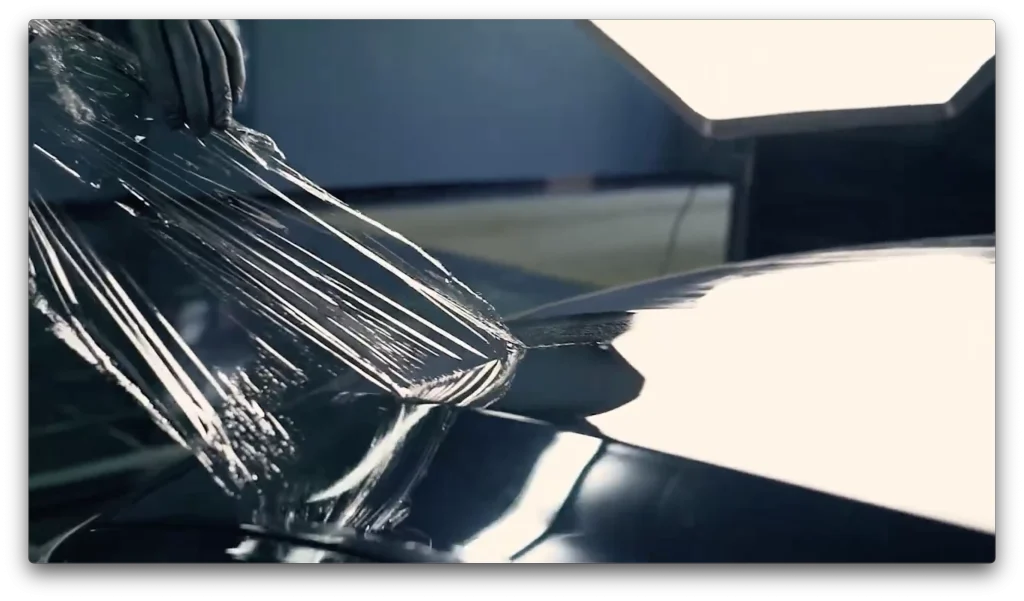
Final Thoughts
In conclusion, bugs and insects may be an unavoidable part of the road trip, but damage from them isn’t. With the right tools and products like TempoRoad, you can enjoy the journey and keep your vehicle unscathed.
If you’d like to learn more about how Nasiol’s line of products can help protect your vehicle from various elements, we invite you to check out our website. Here at Nasiol, we are committed to developing innovative solutions that meet your needs and ensure your car remains in top-notch condition, even during the most adventurous road trips.
